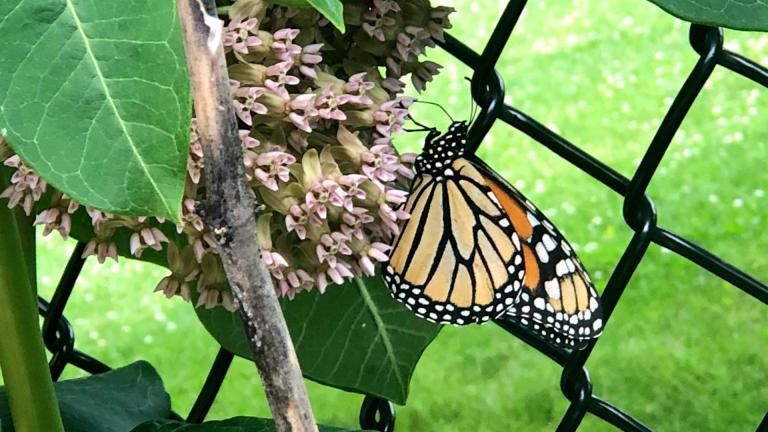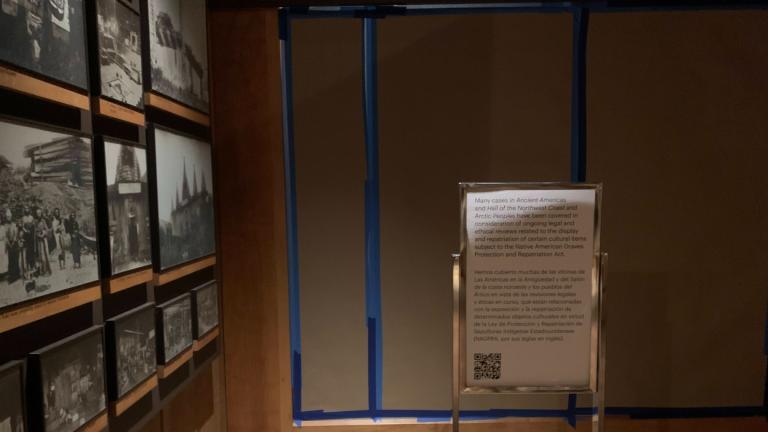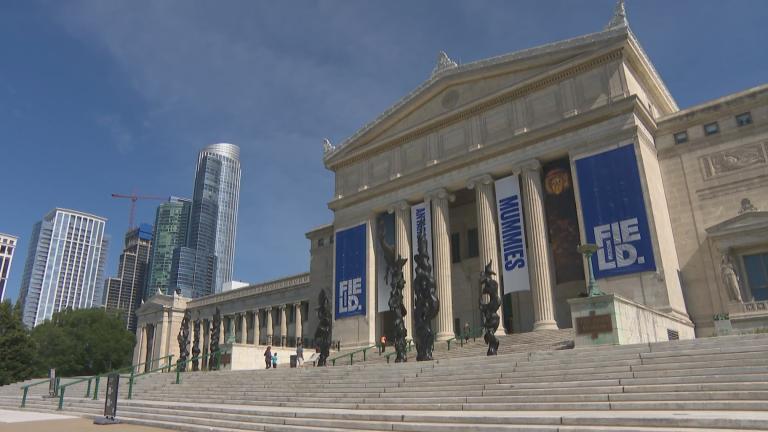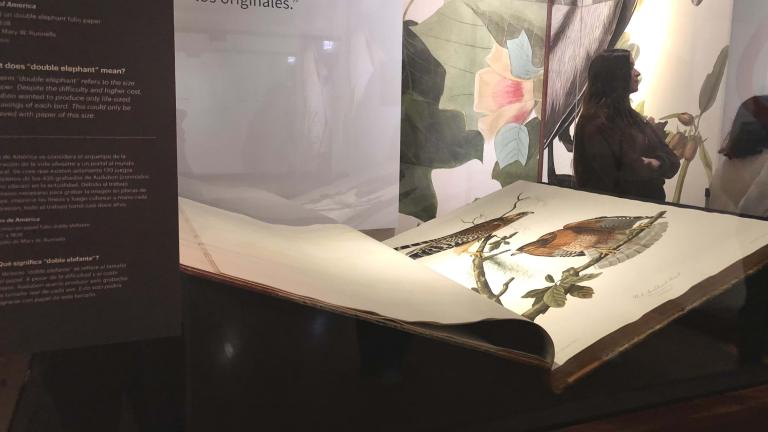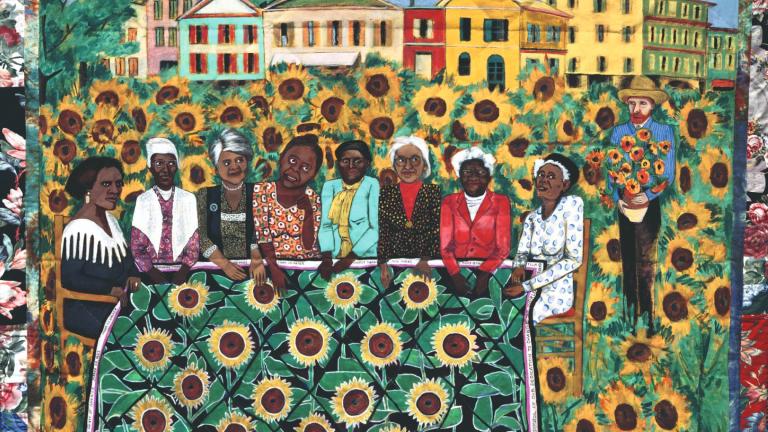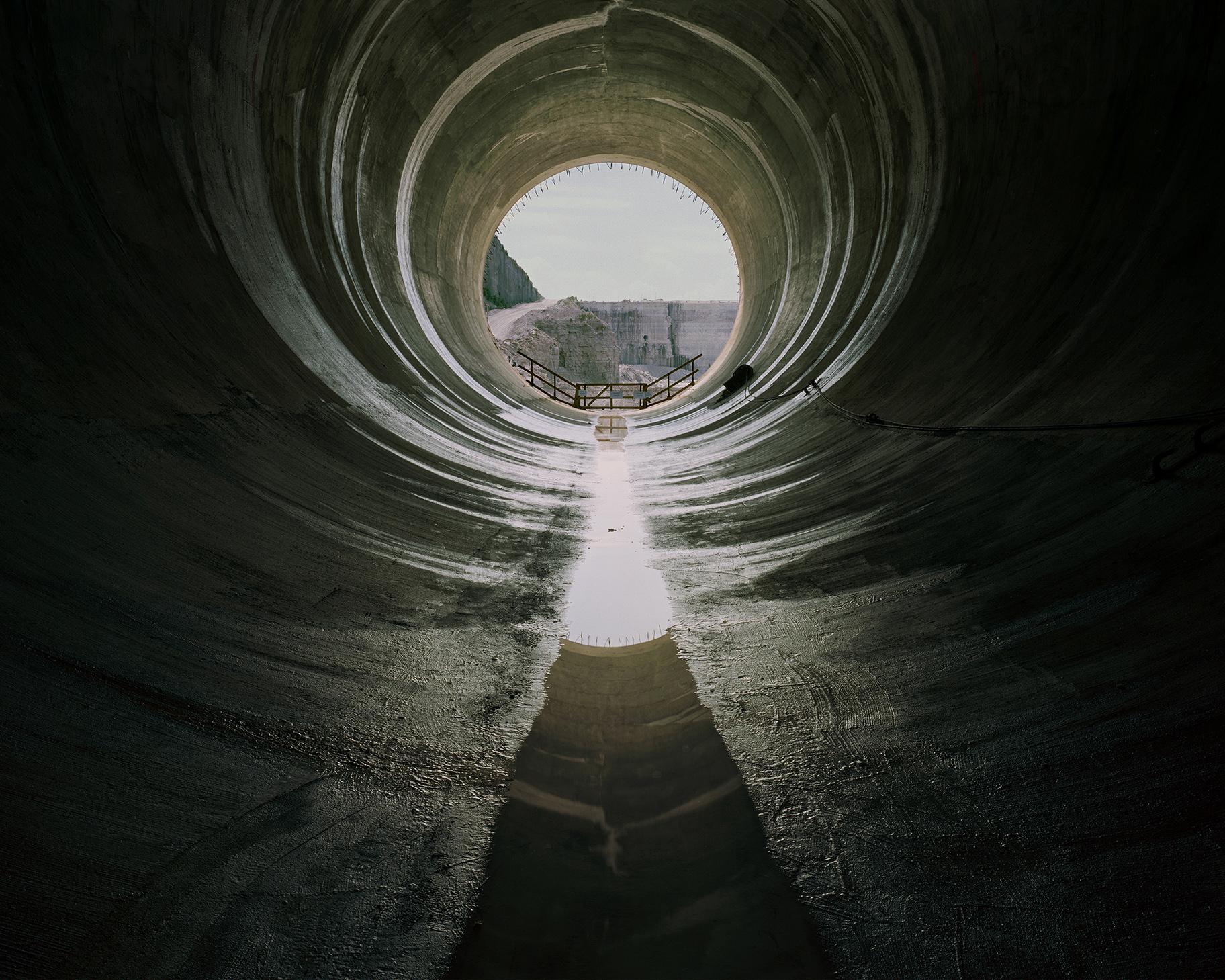 In a photograph titled “West Bull Nose,” Brad Temkin depicts one of the exits of Chicago’s Deep Tunnel. (Brad Temkin / The Field Museum)
In a photograph titled “West Bull Nose,” Brad Temkin depicts one of the exits of Chicago’s Deep Tunnel. (Brad Temkin / The Field Museum)
The water we drink every day comes out of a faucet or a fountain, initiated by an easy turn of the knob or push of a button. Simple, right?
In truth, that water has taken a much longer and complicated journey to reach us, having traveled through a vast network of tunnels, pipes and filtration systems that most of us will never see.
Brad Temkin is not most of us. In his book “The State of Water,” the photographer and native Chicagoan documents the beauty behind the structures and processes that transform the most essential resource on Earth.
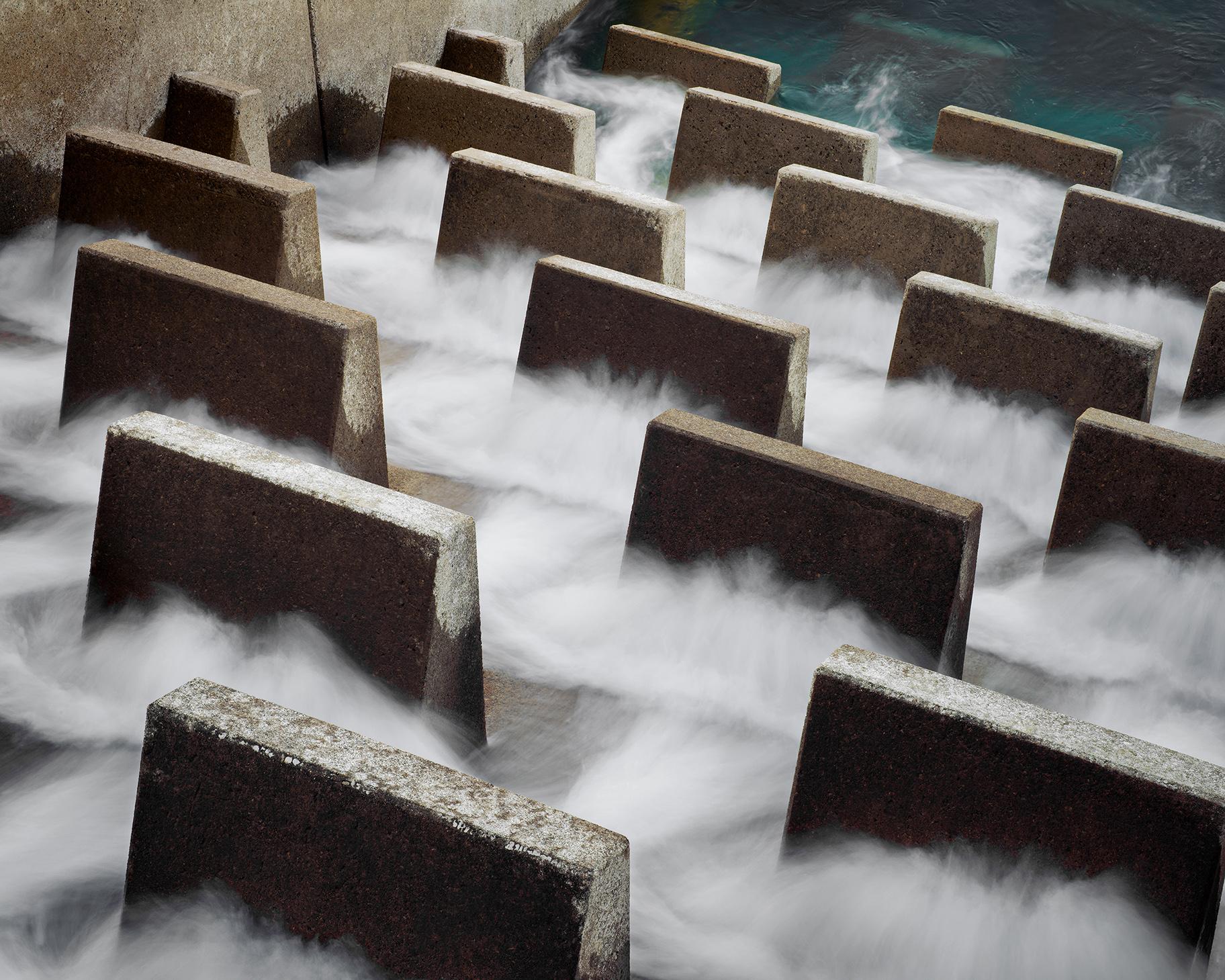 “Diffusers” captures energy dissipators that prevent damage to the lining of a reservoir in Los Angeles. (Brad Temkin / The Field Museum)
“Diffusers” captures energy dissipators that prevent damage to the lining of a reservoir in Los Angeles. (Brad Temkin / The Field Museum)
Temkin’s project is the inspiration for the Field Museum’s newest exhibition by the same name. Opening Sept. 13, “State of Water: Our Most Valuable Resource” showcases 31 of the 70 images in Temkin’s book, which dives into the mostly invisible systems that handle water in major U.S. cities – including Chicago.
His photographs bring into focus extraordinary human feats of architecture and engineering, like Chicago’s 109-mile Deep Tunnel, the pollution and flood control reservoir that is designed to move more than 26,500 Olympic-sized swimming pools of water.
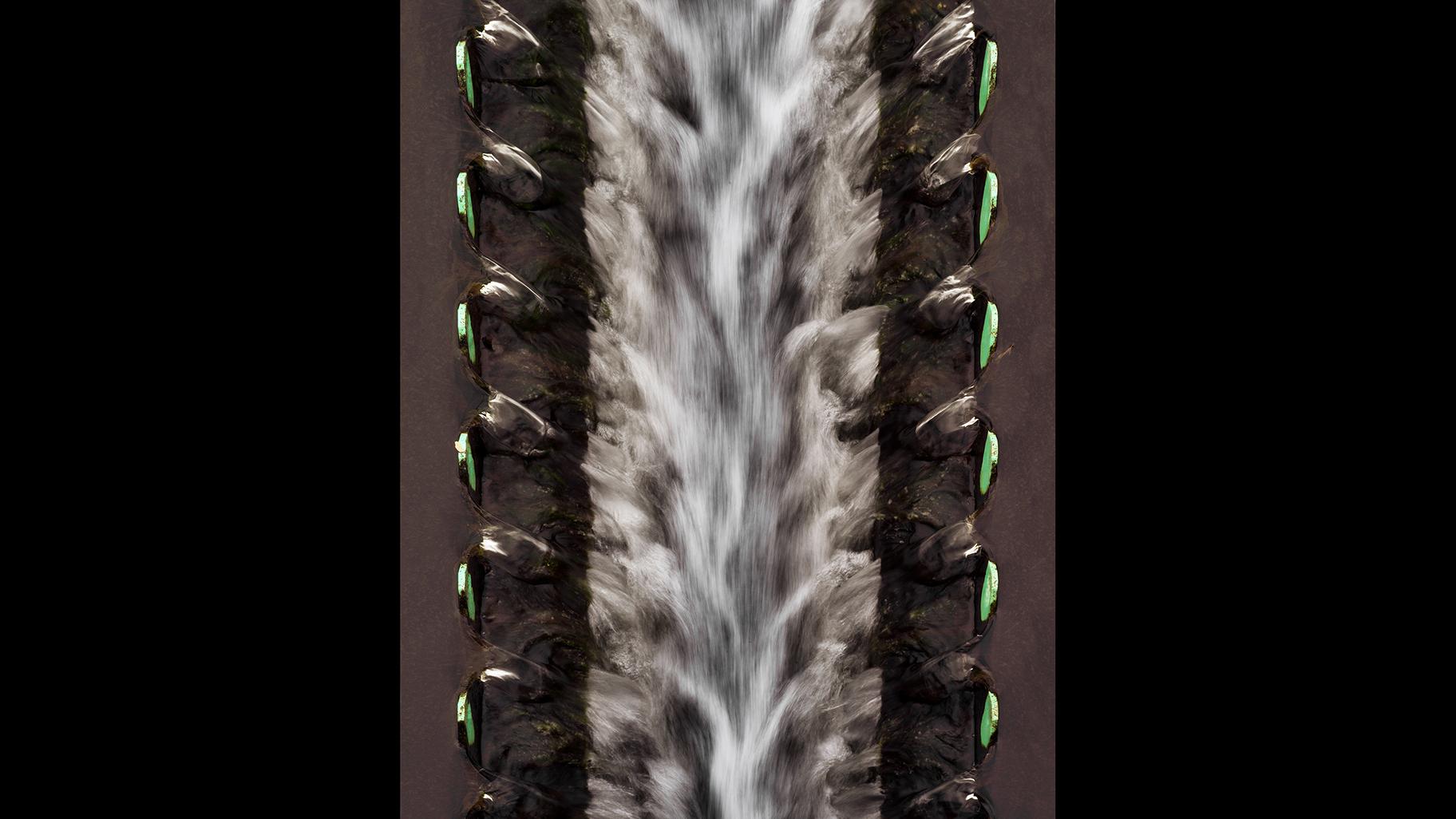 “Between” shows water flowing between weirs, or low barriers, on its way to final treatment in Philadelphia. (Brad Temkin / The Field Museum)
“Between” shows water flowing between weirs, or low barriers, on its way to final treatment in Philadelphia. (Brad Temkin / The Field Museum)
Temkin, who says he is drawn to the “strangeness” and “distorted sense of scale” of the Deep Tunnel and other forms of water infrastructure, sees his images as an important tool for conservationists and others working to preserve water as a resource.
“These pictures address the importance of water and celebrate ideas in design, showing the inventiveness in infrastructure and architecture that no one ever thinks about,” he said in a statement.
Nearly a third of the images featured in the exhibit were taken in Chicago, while others were captured in Los Angeles, Philadelphia and other major cities.
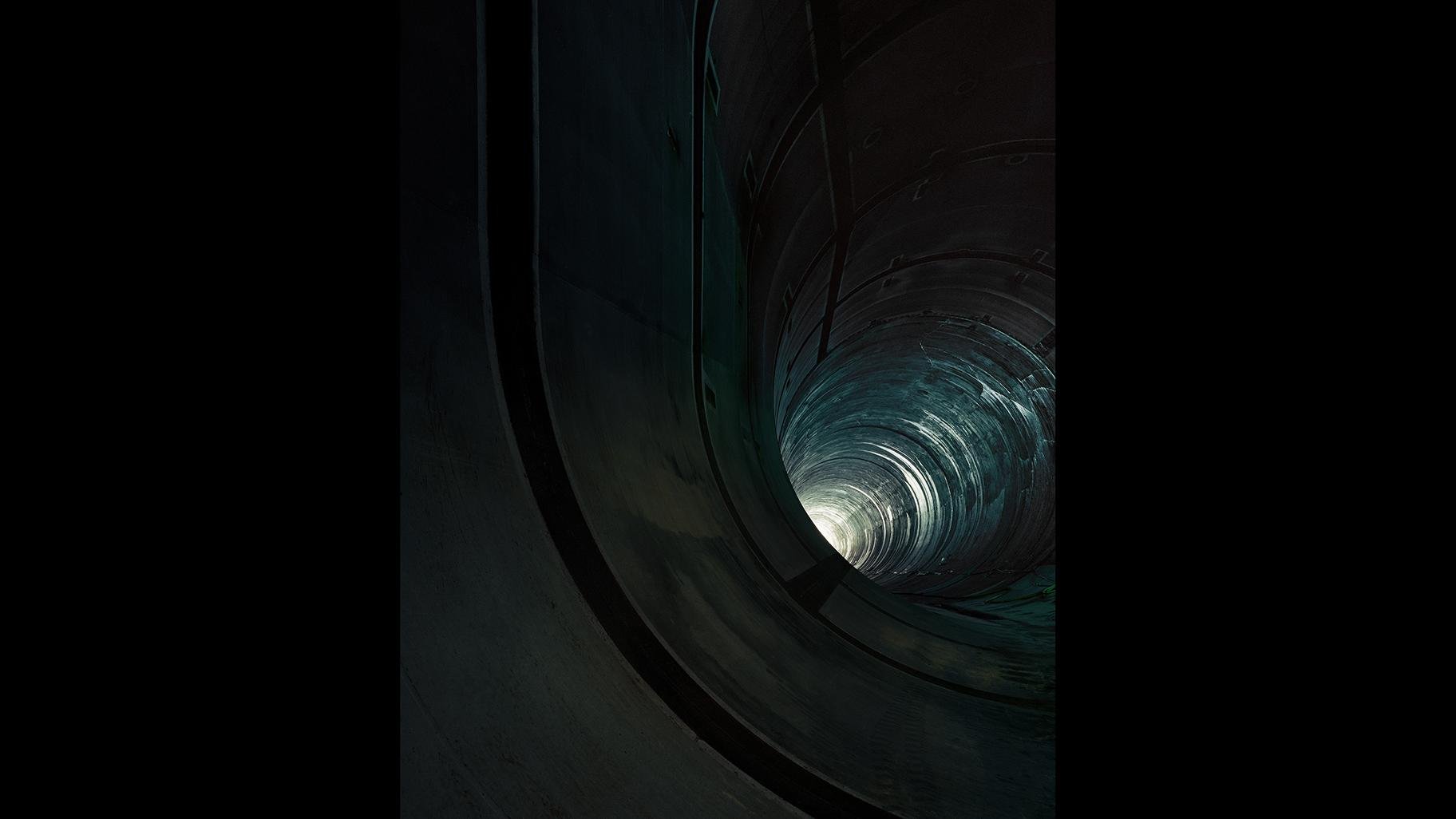 “Deep Tunnel” shows the Chicago tunnel system that is designed to move more than 26,500 Olympic-sized swimming pools of water. (Brad Temkin / The Field Museum)
“Deep Tunnel” shows the Chicago tunnel system that is designed to move more than 26,500 Olympic-sized swimming pools of water. (Brad Temkin / The Field Museum)
The exhibit is designed to let visitors contemplate the unexpected beauty of water treatment facilities and infrastructure while also considering the importance of clean water, according to the Field Museum.
“People think very one-dimensionally when it comes to water,” said Dr. Katherine Moore Powell, a climate change ecologist at the Field, in a statement. “We can struggle to look for a real-world picture to understand these complicated ideas. For instance, at the MWRD [Metropolitan Water Reclamation District], water is purified at a rate of one million gallons per minute. That’s incredible! How are people supposed to appreciate what that even looks like, without seeing it first?”
The exhibit will be presented in both English and Spanish. For more information, visit the Field Museum’s website.
Contact Alex Ruppenthal: @arupp | (773) 509-5623 | [email protected]
Related stories:
New $70 Million Tunnel Keeping Water Out of Northwest Side Streets, Homes
Mix of Heavy Rain, Melting Snow Puts McCook Reservoir to the Test
Officials Dedicate First Stage of McCook Reservoir

